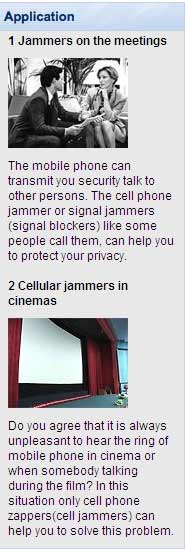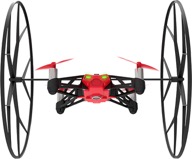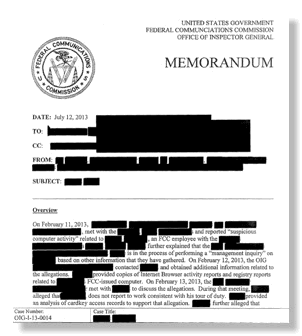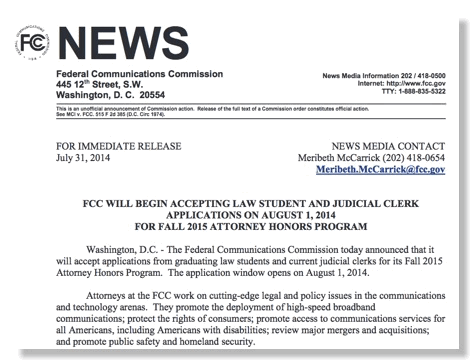PolicyTracker Editorial: time to open up ITU-R meetings?
This recent editorial from the London-based spectrum newsletter PolicyTracker is included here with their kind permission.
Our recent article on the JTG (ITU-R Joint Task Group 4-5-6-7) meeting sparked a debate in the PolicyTracker office: is the ITU-R decision-making process too secretive?
The press cannot attend most of the important ITU-R meetings, except the opening and closing ceremonies of the World Radio Conference. So the actual work of building policy and negotiating compromise is done behind closed doors.
Opinion among my colleagues was divided. ITU meetings are treaty negotiations at the governmental level – so you wouldn’t expect total openness – and furthermore companies are discussing commercially sensitive matters. Besides, some attendees will usually tell you what happened.
Our editorial meeting ended and an email arrived. Someone had read the JTG article and claimed we had been taken in by “GSMA spin”.
To write the piece we had indeed found some people who would talk to us, but some of them had an axe to grind. We cannot see the documents themselves, so we could not balance one interpretation against another.
And it’s not just the press which is blindsided: so are ordinary citizens, consumers groups and NGOs who can't afford the ITU-R's membership fees.
WRC decisions affect hundred of millions globally and spectrum managers often complain that the public do not recognise the importance of the field. But how can stakeholders become engaged without access to the ITU-R meetings and documents?
The ITU will hold its regular plenipotentiary this Autumn. This gives the international spectrum community the opportunity to ask itself: is this the best we can do?

Observations
One can attend ITU-R meetings by either joining ITU for a basic rate of CHF 10,600 ($11,700) or by joining a national delegation. While Fortune 500 companies should have no problem using either route, Silicon Valley startups are at a real disadvantage. Regular participation in domestic ITU-R study groups increases the chances of being on the US delegation, but can be very expensive for small firms over the long run. Also there are unconfirmed stories that in the latter part of the Bush 43 Administration, people who had given to the “wrong” candidates were not elected by DOS for the delegation lists.
There is no simple answer for these problems, but we’re glad to give Mr. Sims’ editorial more exposure on this side of the “pond”.
Washington Times' FOIA Request on FCC Employees & On-the-job Web Porno Use
For one Federal Communications Commission worker, his porn habit at work was easy to explain: Things were slow, he told investigators, so he perused it “out of boredom” — for up to eight hours each week.
Lack of work has emerged time and again in federal investigations, and it’s not just porn, nor is it confined to the FCC. Across government, employees caught wasting time at work say they simply didn’t have enough work to do, according to investigation records obtained under the Freedom of Information Act.
It went on to say
“A spokesman for the FCC declined to comment on what, if any, action the agency took after the FCC’s inspector general singled out the eight-hour-a-week porn peeper.”
So your conscientious blogger was curious to see what was the source of this information and the larger context. Sending an inquiry to FCC, I received the FOIA response that the Times had received within 3 days - great service!
However, as is typical at FCC it was more redacted than even CIA and NSA! Take a look at the document at left that was sent to the Times reporter with a cover letter signed by the FCC’s IG. Several observations:
- It is really a package of 5 investigations from to July 2013 to March 2014. In one case no violations were found, in the other 4 violations were found.
- Despite the excessive redactions, they were not done very carefully. For example on p. 5 of the pdf we find that the computers suspected to have been used for porno were located in “Room CY-C247 of the FCC’s Portals II facility”. We also learn that an FCC employee and a contractor were both suspects. This was a case where no violations were found! We also find out on p. 32-33 of the package that it involved the “HFDFADMIN2-HP workstation”. While this may mean little to the redactors, it is clear to your blogger that this means the HF/short wave monitoring system formerly operated by the Enforcement Bureau and its predecessors, but now operated by the Public Safety and Homeland Security Bureau with virtually no public information. This system is operated from a newly constructed building at the FCC’s Columbia MD property, behind the Laboratory and closer to the EB field office, that I don’t think was ever publicly announced even although it is the first new FCC owned building in several decades. (Oddly, the building is not on satellite photographs on Google and comparable sites.) It is amusing to note that the secretive activities of this PSHSB activity are done by people who have high security clearances but access porno while on the job! (Here is one of FCC’s few cryptic detailed public references to this HFDF system that is perhaps the most secretive part of FCC.)
- While the FCC has a “Freedom of Information Act Electronic Reading Room” that says it contains “Records disclosed in response to a FOIA request that ‘the agency determines have become or are likely to become the subject of subsequent requests for substantially the same records.’ “ and one might think this package of document meet that description, in reality previously FOIA’d information is not there. May it is somewhere on the FCC’s chaotic site, but your blogger hasn’t found it. By comparison, CIA, NSA, and NRC make previous FOIA releases actually available!
- FCC continues to have little interest in complying fully with the following provision of 5 USC 552(b): “ If technically feasible, the amount of the information deleted, and the exemption under which the deletion is made, shall be indicated at the place in the record where such deletion is made.” Thus there is no indication in this FOIA release of the justifications. While it is reasonable to think most of the redactions are reasonable, the statute appears to require that FCC give at least an exemption number for each or allege that some exemption number applies to all. There is no such indication in the released redacted document.
- The NRC IG recently released a 32 page audit report reviewing that agency’s FOIA practices, finding some problems, and making constructive suggestions. We suspect many of these suggestions would apply also to FCC. In view of the fact that the FOIA release discussed here was managed by the FCC’s IG, signed by him and had problems as discussed above, we urge FCC to have an independent review of its FOIA practices. While the President’s 1/21/09 FOIA/Openness memo is not formally binding on FCC, one might think that it would have a high influence on at least the 3 Democrats at FCC.
- IGs at other agencies under the same exact statutory charter as the FCC IG make periodic public reports on some of the investigations they have made of internal agency operations. FCC’s IG only issue the minimum required semiannual report and it does not discuss internal problems and possible improvements. The period of the 5 investigations covered in this FOIA release is covered by 2 semiannual reports : April 1, 2013 through September 30, 2013 and October 1, 2013 to March 31, 2014. While the first report (p. 23) cryptically alludes to a “separate investigations based on significant amounts of pornographic material”, there is never any discussion in either about the other investigation and findings. While the IG should not make his whole finding public for a variety of good reasons, his reporting on internal investigations is at best questionable.
Drones & Spectrum:•Will FCC Policy Vacuum Trigger Jamming Increase?
•Will Propagation from Altitude Overload Already Crowded Spectrum?
•Will Propagation from Altitude Overload Already Crowded Spectrum?
Seattle Woman Spooked by Drone Outside Her Window
The GPS and cellular industry are vehemently against jamming of their spectrum and are pressing FCC for more rigorous action. The recent June 20 FCC workshop on “GPS Protection and Receiver Performance” was full of pledges to step up enforcement and the recent $34,912,500 NAL to a Chinese jammer manufacturer was an attempt by FCC to show its commitment to such enforcement - although the likelihood of the perpetrator ever paying anything is slight.
From an actual jammer ad

The picture at left comes from a cellular jammer ad and shows the pitch they are using. (We will not give the original source here but it has been shared with FCC/EB.)
While FAA is working under a congressional mandate to resolve its regulations for drones, FCC seems disinterested in the matter -- except in the context of the NPSTC National 4.9 GHz Plan for public safety users. But as the NY Times reported yesterday “Drones Outpacing Rules as Popularity Soars in New York”.
Using either cellular spectrum or unlicensed spectrum from drones is really a bad idea and should be forbidden.
Why? There are good technical reasons why we have frequency allocations for the Aeronautical Mobile Service where drone-related communication should be. The range of a radio signal (and its potential interference to other users) is determined both by its transmitter’s height as well as its (effective radiated) power. Airplanes and drones are at much higher heights than terrestrial users.
The unlicensed and cellular bands and their technical rules were designed for terrestrial use. Using cellular or unlicensed spectrum at even several hundred foot altitude will impact other users much more than comparable terrestrial use. For example, in a dense cellular repeater environment, a drone-based cellphone will likely hit several repeaters with comparable power and use up disproportionate spectrum capacity. Similarly, it will disproportionately increase the apparent load in unlicensed systems, effectively decreasing their capacity much more than a terrestrial user with the same bit rate.
In addition to this overload problem, drone based imagery will likely be seen by many as invasive as shown in the video at the top of this post. Experience has shown that such feelings often lead to interest in jamming for self-protection. While such jamming is illegal, it is growing and FCC actions to date under present laws and rules have had little impact. Thus it is likely that the growth of drone-based imagery in the unlicensed bands and cellular bands will be accompanied by a surge of jamming to the detriment of all cellular and unlicensed users!
So why isn’t anything being done? Look back a few blog entries to the “VA and FCC” entry here. Your blogger believes that like the VA, FCC is operating at a throughput less than that required for its actual spectrum policy role. In this hypothesis, major regulatees, both licensed and unlicensed, are implicitly or explicitly told to limit their requests to FCC so they can at least get their key requests accomplished.
What could be done about drones at FCC to prevent drone based downlinks from adversely impacting unlicensed systems and cellular systems? The previous drone post here advocated amending § 15.9 to forbid drone based imagery as well as the currently forbidden (for non law enforcement) “eavesdropping”. With respect to cellular systems, both § 22.925 and § 91.21 limit use of transmitters in "1) Aircraft operated by a holder of an air carrier operating certificate or an operating certificate; or (2) Any other aircraft while it is operated under IFR" and "aboard airplanes, balloons or any other type of aircraft". We urge FCC to amend these to forbid use of cellular spectrum from drones and urge the cellular community to tell FCC this is an urgent matter.
Note that we are not advocating that FCC forbid spectrum for drones, rather that such spectrum use be in bands that are planned for such use considering the heights involved in it.
Sprint’s New Drone

Review of a Consumer Drone Using 2.4 and 5 GHz Unlicensed Spectrum
Recruiting@FCC: FCC Starts Looking for New Lawyers but Not Engineers
Engineering staffing issues at FCC have been a recurring topic here. We previously wrote about a report from the National Academy of Sciences/National Research Council supported by funding from the National Science Foundation that recommended to “(m)ake it a priority to recruit topcaliber engineers/scientists to work at the FCC, perhaps for limited terms.” (Let’s ignore the issue that other regulatory agencies with technical jurisdiction routinely ask NAS/NRC for reports about their technical regulatory issues while FCC hasn’t in decades.)
In 2006 and 2012 we have raised issues about why FCC isn’t recruiting on college campuses at the time when the best students are looking for jobs. We believe that last year FCC did not recruit for even lawyers due to budget issues, but now they are back at reciting for lawyers early in the academic year, but not engineers.
In the link for information given in the above release, there is the following statement that has never had a counterpart for engineers at FCC:
The FCC bureaus and offices that hire engineers have historically rejected the idea of a rotation program for entry level engineers even though it is standard practice at most federal agencies. The basic logic is that entry level engineers are generally give boring tasks to reduce application backlogs in the near term and that is more important than the long term benefits of rotation and trying to put “square pegs in square holes”.Participants may have the opportunity to rotate to a new assignment within the agency at the end of their first year. During their two years in the Honors Program, attorneys will also be afforded professional and educational opportunities designed specifically for Program participants.





![Validate my RSS feed [Valid RSS]](valid-rss-rogers.png)

